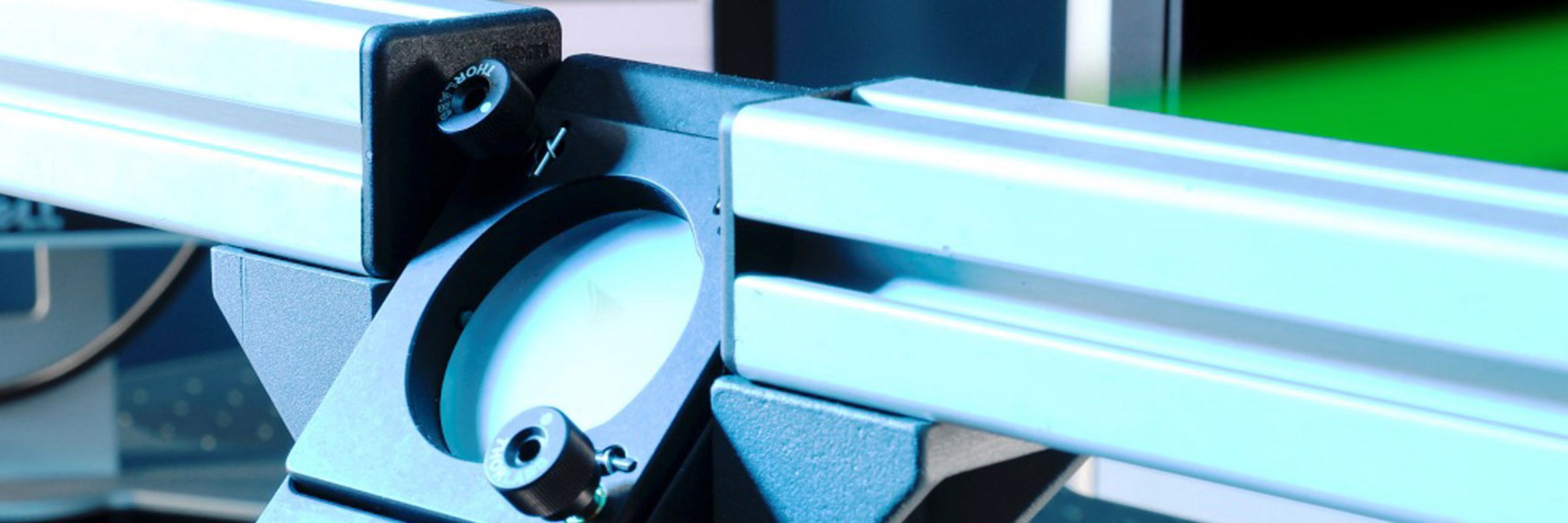Photonic Systems

With the intention of creating tangible system innovation, the PHOS team specialises on multi-disciplinary research and development of optical, opto-electronic and mechanical components in a co-ordinated, holistic effort.
RESEARCH FOCI
- Optical sensor and metrology systems, dealing with customer-defined applications as diverse as optical detectors for nano-particles in (automotive) exhausts to highly integrated imaging systems for bio-molecular analysis
- M(O)EMS based photonic systems solutions, designing complete, functional optical, mechanical and electronic systems incorporating suitable functional micro-components, e.g. various micro-mirrors
- Specialised high-performance laser systems, both around SAL’s HiPoLas® ultra-compact diode pumped solid-state high-power laser system or alternative lasers, with applications ranging from sensing applications to laser ignition
- Intelligent spectroscopic systems solutions, where research addresses both the spectroscopic hardware, from non-dispersive target sensors to MEMS-empowered spectrometers, and the spectroscopic intelligence, including multi-variate data analysis and e.g. condition-adaptive models
Related research typically addresses fundamental questions, like new optical designs or special components, alongside practical considerations, including geometrical and other use-defined constraints or e.g. tolerancing of optical elements. In line with that, R&D projects may range from initial technical and scientific feasibility studies to the realisation and characterisation of fully functional demonstrators.
RESEARCH COMPETENCIES
The R&D area’s team covers all relevant scientific and technological disciplines, in particular optics and photonics, physics, optical- and systems-design, opto-electronics, laser physics, spectroscopy and chemistry. This allows competently dealing with topics including:
- Design and systems integration of (micro-)optical systems
- Simulation of complex, integrated systems, both on the optical and photonic and superordinate systems levels, taking also e.g. thermal, mechanical and electronic interactions and interdependencies into account
- Selection, adaptation and implementation of application-optimised systems components, like light sources and detectors, control and data acquisition / evaluation systems etc.
- Selection, adaptation and implementation of highly functional MEMS/MOEMS components in intelligent systems solutions
- Macroscopic and microscopic UV/VIS, near- and mid-IR and Raman spectroscopy and imaging, including spectral data evaluation models and procedures
- Development of specific optical-spectral analysers and sensors
- Development and application-specific adaptation of monolithic high-performance lasers (SAL HiPoLas® line)
- Laser ignition, e.g. of piston engines, turbines and space thrusters
- Comprehensive systems integration and optimisation
- Experimental characterisation and validation of optical systems and sub-systems
- Optical Design, Interferometry, THz-Imaging, ultrafast spectroscopy, non-linear optics, ToF-Sensors, Light-field microscopy…
The area’s research infrastructure includes laboratories for general optics, a dedicated, certified laser laboratory, a laboratory for spectroscopy and a chemical laboratory for sample preparation and reference analyses. Besides a full set of optical, opto-mechanical and opto-electronic components for laboratory setups, various metrology tools, including systems for characterising lasers of all classes, are available. In addition, the group possesses several high-end spectrometers, from the UV/VIS to the THz range, including an IR and a Raman microscope. This experimental infrastructure is furthermore supplemented by a continuously maintained and expanded state of the art simulation infrastructure (e.g. ZEMAX OpticStudio Premium und LightTrans VirtualLab Fusion and COMSOL Waveoptics) as well as spectral data evaluation software and reference databases.
APPLICATIONS
Optical sensors for the analysis for fine dust nanoparticles in automotive exhausts
A next-generation condensation particle counter for detecting nano-particles below 100 nm in automotive exhausts was developed in a joint project with Austrian partner AVL List GmbH. In this case, the development stretched well beyond the optical stray light detector, which was fundamentally re-developed and improved as well, to the entire systems and its internal functionings and interdependencies, including thermal management, evaporation of working fluids in special micro-porous wick elements and the creating of a super-saturated growth zone in a careful balance between gas flow, thermal conductivity and gas and (nano-)particle diffusivity. The resulting AVL-CPC nanoparticle sensor based on a new, highly compact vertical annular design provides a uniquely high discriminatory power by nanoparticle diameter, a precise controllability of the effective particle detection cut-on size, a significant reduction in the effective particle losses in the sensor and a major improvement in particle detection dynamics.
MEMS-powered situation-adaptive laser headlight
Together with Osram, the market leader in automotive lighting, the SAL team was exploring novel light source units for automotive laser lights. Work included a comprehensive optical design, taking into account different laser technologies, optical components, opto-mechanical arrangement and the achievable light budget. Optimization of mechanical and electronic factors is crucial in order to achieve realistic specifications for the overall system. Laser safety is another key factor which has to be ensured. A fully functional prototype was built, based on laser-activated remote phosphor (LARP) technology. Here the blue light from the high-power laser diodes is converted into pure white light using a special converter medium. The emitted light cone is shaped by the headlight’s optics to create a beam which illuminates the road. MEMS technology included in the unit allows adaptive definition of the illuminated area which can be used to avoid glaring of other road users or to highlight possible sources of danger. Laser technology creates completely new dimensions in headlight design. Laser diodes provide superior beam quality and brightness while consuming 30% less energy. Furthermore, due to their tiny package headlights can be made even smaller in the future - without having to compromise on light intensity. Drivers primarily benefit from the fact that such headlights have the longest range currently available. That ensures improved visibility and therefore greater safety on the roads.
FUNCTIONAL LIGHT-BASED SYSTEMS
The control of light in every form is the focus of photonics. The aim is to create a functional system which adapts both optical, optoelectronic and electronic components to one another as well as to the application. The SAL expertise ranges from design and simulation to the realization of photonic systems to application-centric system integration.
Your contact person

Dr. Andreu Llobera Adan
Head of Research Unit Photonic Systems
e-mail: contact@silicon-austria.com




